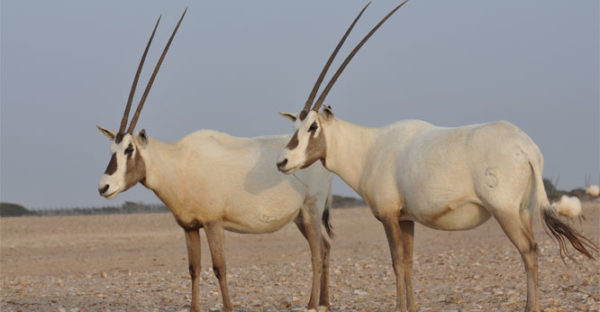World bank & Oxford Business Group: 2019 looks stronger as a year of tourism in Oman

Ashraf Abo Arafe
As Oman’s economy is set to accelerate stronder in 2019 than 2018, with experts, surveys, and GDP growth forecasts all indicating another banner year for the country’s development. Expert analysis ranging from the Oxford Business Group (OBG) to the World Bank predicts a year of economic expansion and diversification.
* More significant!
A number of economic indicators have predicted Oman’s GDP growing by 3.5%, higher than the initial forecast of 2.5% earlier this year. Additionally, with the nation’s deficit continuing to fall, revenue is expected to contribute even more significantly to job creation, industrialisation, and government revenues.
The Ministry of Tourism said that “contribution of tourism to GDP will rise to 10 per cent from 6 per cent”. According to the Implementation Support and Follow-up Unit (ISFU), the performance indicators of the logistics sector by 2020 will increase the contribution of the logistics sector to the Sultanate’s Gross Domestic Product to OMR2 billion.
An official at the Ministry of Finance told the Times of Oman, “Oil prices have surged, which led to the increase in revenues.” Speaking to the Times of Oman, Ahmed Al Hooti, a board member of the Oman Chamber of Commerce and Industry, said, ““From my point of view and according to the numbers we have, Oman’s economy can achieve growth and outdo other GCC states. But that depends on the rules and regulations which could be used in this new year.”

Mentioning Tanfeedh, Al Hooti added, “We have to work hard to maintain these new sectors and (in doing so) I believe we can achieve very good growth.” Financial analyst and economic expert Mubeen Khan was also optimistic, stating, “The Omani economy is marching ahead with continuously improving financial indicators. I see 2019 being even more promising with regard to government revenues, economic performance, job creation, and the further industrialisation of the Omani economy.
“Khalfan Al Busaidi, Founder and CEO of Kulshai, told Times of Oman, “I am highly optimistic that 2019 will be a major year for manufacturers and SMEs in Oman. There is no reason why it will not; because of the business infrastructure that is in place, all that is left is for SMEs and other entrepreneurs to roll up their sleeves and just do it.”
“Let us work together to gain global market exposure by adapting current technologies with cost-effective production measures and collectively boost the Omani industry.” Lateef Shahdad, General Manager of Mass International, added, “There is no doubt that next year’s economic situation in Oman will be relatively better than 2018. The worst has passed and the country did substantially better to survive the impact of the downturn in oil prices. As of now, next year’s economic indicators are clear and positive, which forecasts greater growth and investment.”
Tourism is among the many sectors expected to lead the way, as shown by an Oxford Business Group survey. As part of the recent 2018 edition of the Business Barometer: Oman CEO Survey, over half of all participating business executives based in the Sultanate identified tourism as the most influential sector in the nation’s diversification drive.

Oliver Cornock, Middle East Managing Editor at OBG, said, “Some 89 per cent of the CEOs we surveyed rate the Sultanate’s current tax environment as competitive or very competitive. The non-oil economy is growing at a fair clip – 3.9 per cent in 2017, up from 2.6 per cent in 2016, according to figures from the Central Bank of Oman. Much of this is interestingly generated by the services sector, which from a policy perspective has the additional fillip of providing employment. Some 73 per cent of the Omani CEOs surveyed identify oil prices as the single biggest factor that could impact the local economy in the short to medium term, showing that hydrocarbons remain the most important part of the economy.” Oman’s GDP, Cornock explained, is expected to “increase to 3.5 per cent or higher by some analyst estimates”.
Tourism is already a major industry in Oman, as outlined by a recent report by Tanfeedh’s ISFU, with plans to increase its contribution to the nation’s GDP to OMR1.5 billion by 2020. The contribution of travel and tourism to GDP in 2017 was OMR8 49.5 million, or 3.2 percent of total GDP, according to the World Travel and Tourism Council’s annual report in 2018.
Further investments in the Sultanate’s tourism sector are also expected to increase the number of jobs in tourism to 45,000 by 2020. As part of the nation’s tourism development strategy, private sector investments are also expected to increase to OMR1.8 billion. By 2020, Oman’s continued rise on the economic stage was also highlighted by the World Bank in a report released earlier this year. According to the report, “Over the longer term, pro-business reforms such as foreign ownership, FDI, SME support and PPP laws are expected to increase trade and investment. A further impetus to growth will be provided by rising natural gas exports from the seven-year natural gas supply deal signed between BP and Oman LNG.”
With regard to developments in the energy sector, it was revealed that a first-of-its-kind solar project would be launched in 2023. The Ibri solar project is considered the first renewable energy project in the Sultanate that uses solar cell technology. Predictions reveal that the project will provide 33,000 homes with electric energy.
In the next five years, the energy sector will see a significant shift towards renewable and sustainable energy. Beginning with the commercial operation of the Dhofar wind power project next year, starting from 2020 to 2023, four other solar projects will be launched in Amin, Ibri, Manah, and Adam. This is in addition to two wind power projects in Duqm and Sur and another project to produce electric power from waste products.






